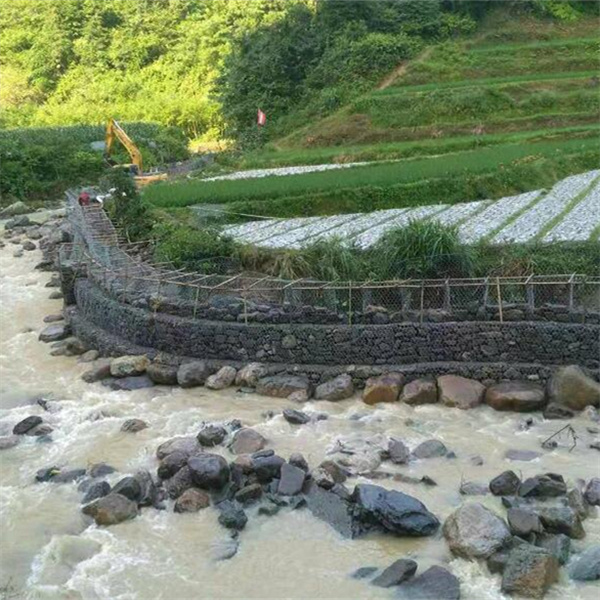Dis . 04, 2024 05:12 Back to list
Understanding the Functions and Benefits of Gabion Walls in Construction and Landscaping
The Purpose and Benefits of Gabion Walls
Gabion walls have emerged as a popular solution for a variety of engineering and landscaping challenges. Constructed from wire mesh baskets filled with rocks, stones, or other materials, these walls serve multiple purposes that benefit both the environment and infrastructure development. This article explores the significance of gabion walls, their applications, and the advantages they offer.
A Brief Introduction to Gabion Walls
Originally used in military applications for fortifications, gabion walls are now widely utilized in civil engineering, landscape architecture, and environmental conservation. The term gabion is derived from the Italian word gabbione, meaning big cage. This aptly describes the wire mesh baskets that form the backbone of the structure. Once filled with suitable materials, gabion walls become stable, permeable structures that blend into their surroundings.
Key Purposes of Gabion Walls
1. Erosion Control One of the primary uses of gabion walls is to combat soil erosion. They effectively stabilize riverbanks, slopes, and hillsides by absorbing and dissipating the energy of flowing water. The porous nature of gabions allows water to flow through while trapping sediment, preventing it from washing away.
2. Retaining Structures In landscaping and civil engineering, gabion walls are often employed as retaining walls to hold back soil. They are particularly effective in areas with steep gradients where traditional concrete walls might fail. The flexibility and adaptability of gabion walls enable them to accommodate ground movement and shifting earth.
3. Flood Management Gabion walls play a crucial role in flood management systems. By constructing barriers along riverbanks and flood-prone areas, they can reduce the impact of high water levels. The design allows for the natural flow of water while protecting adjacent properties and communities from flooding.
4. Noise Barriers In urban environments, gabion walls can also serve as noise barriers. When strategically placed along highways or near busy roads, they help mitigate traffic noise, creating a more peaceful living environment for nearby residents.
gabion wall purpose factories

5. Aesthetic Enhancement Beyond their functional benefits, gabion walls can enhance the aesthetic appeal of a landscape. Landscapers often utilize them in garden designs, pathways, and outdoor structures, allowing for creative and visually appealing solutions that blend seamlessly with natural surroundings.
Advantages of Gabion Walls
1. Cost-Effectiveness Compared to traditional retaining walls constructed from brick or concrete, gabion walls are often more economical. The materials used for filling can be sourced locally, reducing transportation costs. Additionally, the construction process is generally quicker and requires less skilled labor.
2. Environmental Sustainability Gabion walls are an environmentally friendly option. Since they are made from natural stones and wire mesh, they have a lower carbon footprint than concrete alternatives. They also promote vegetation growth, contributing positively to the surrounding ecosystem.
3. Longevity and Durability Properly constructed gabion walls have a long lifespan, often exceeding several decades. The materials used are resistant to weathering and can withstand harsh environmental conditions, making them a reliable choice for various applications.
4. Flexibility and Adaptability Gabions can be customized in size and shape to suit specific projects. This versatility allows engineers and designers to create solutions tailored to unique landscape challenges, making gabion walls suitable for a wide range of applications.
5. Permeability The open structure of gabion walls allows for natural drainage, reducing hydrostatic pressure behind the walls. This permeability helps maintain soil moisture levels and promotes healthy plant growth, further contributing to the environment.
Conclusion
Gabion walls are a practical and multifunctional solution for modern engineering and landscaping challenges. Their effectiveness in erosion control, flood management, and aesthetic enhancement, combined with their cost-effectiveness and environmental benefits, makes them an attractive option for developers and landowners alike. As we continue to face environmental challenges, the role of gabion walls will likely expand, solidifying their place in sustainable development practices.
-
hesco-gabion-baskets-for-coastal-erosion-prevention
NewsAug.22,2025
-
longevity-and-durability-of-river-rock-gabion-walls
NewsAug.22,2025
-
how-to-integrate-gabion-3d-walls-in-urban-planning
NewsAug.22,2025
-
reno-mattress-gabion-applications-in-civil-engineering
NewsAug.22,2025
-
how-to-install-wire-mesh-for-gabion-baskets-properly
NewsAug.22,2025
-
best-materials-for-filling-a-chain-link-gabion
NewsAug.22,2025
-
Wire Mesh Thickness Impact on Gabion Wall Load Bearing
NewsAug.12,2025






